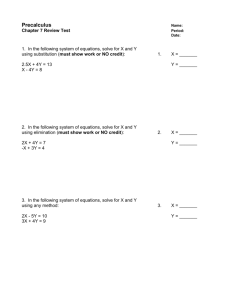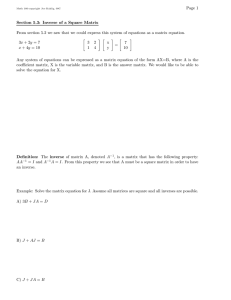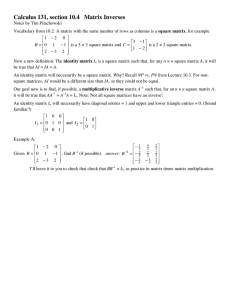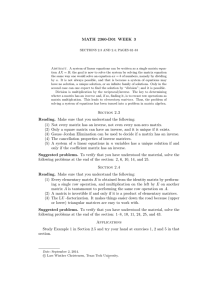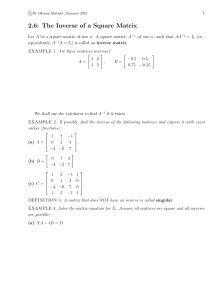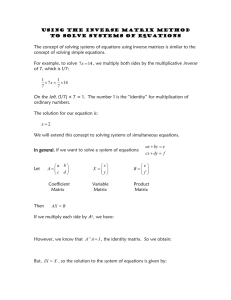Document 10435130
advertisement
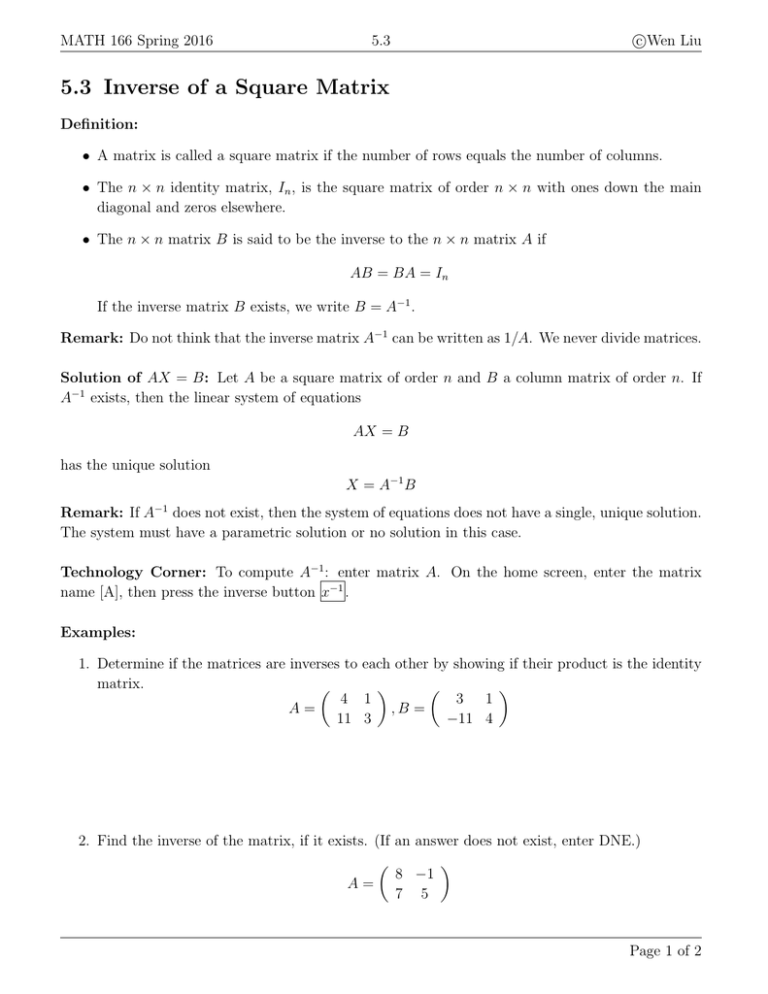
MATH 166 Spring 2016 5.3 c Wen Liu 5.3 Inverse of a Square Matrix Definition: • A matrix is called a square matrix if the number of rows equals the number of columns. • The n × n identity matrix, In , is the square matrix of order n × n with ones down the main diagonal and zeros elsewhere. • The n × n matrix B is said to be the inverse to the n × n matrix A if AB = BA = In If the inverse matrix B exists, we write B = A−1 . Remark: Do not think that the inverse matrix A−1 can be written as 1/A. We never divide matrices. Solution of AX = B: Let A be a square matrix of order n and B a column matrix of order n. If A−1 exists, then the linear system of equations AX = B has the unique solution X = A−1 B Remark: If A−1 does not exist, then the system of equations does not have a single, unique solution. The system must have a parametric solution or no solution in this case. Technology Corner: To compute A−1 : enter matrix A. On the home screen, enter the matrix name [A], then press the inverse button x−1 . Examples: 1. Determine if the matrices are inverses to each other by showing if their product is the identity matrix. 4 1 3 1 A= ,B = 11 3 −11 4 2. Find the inverse of the matrix, if it exists. (If an answer does not exist, enter DNE.) 8 −1 A= 7 5 Page 1 of 2 MATH 166 Spring 2016 c Wen Liu 5.3 3. Find the inverse of the matrix, if it exists. (If an answer does not exist, enter DNE.) A= 4 2 6 3 4. Consider the system of equations given. −2x − y + 3z = 3 x + y + 2z = 3 2x + 2y + 3z = −3 (a) Write a matrix equation (in the form AX = B) that is equivalent to the system of linear equations. (Use the order of the equations to write the matrix.) (b) Solve the system. Page 2 of 2
